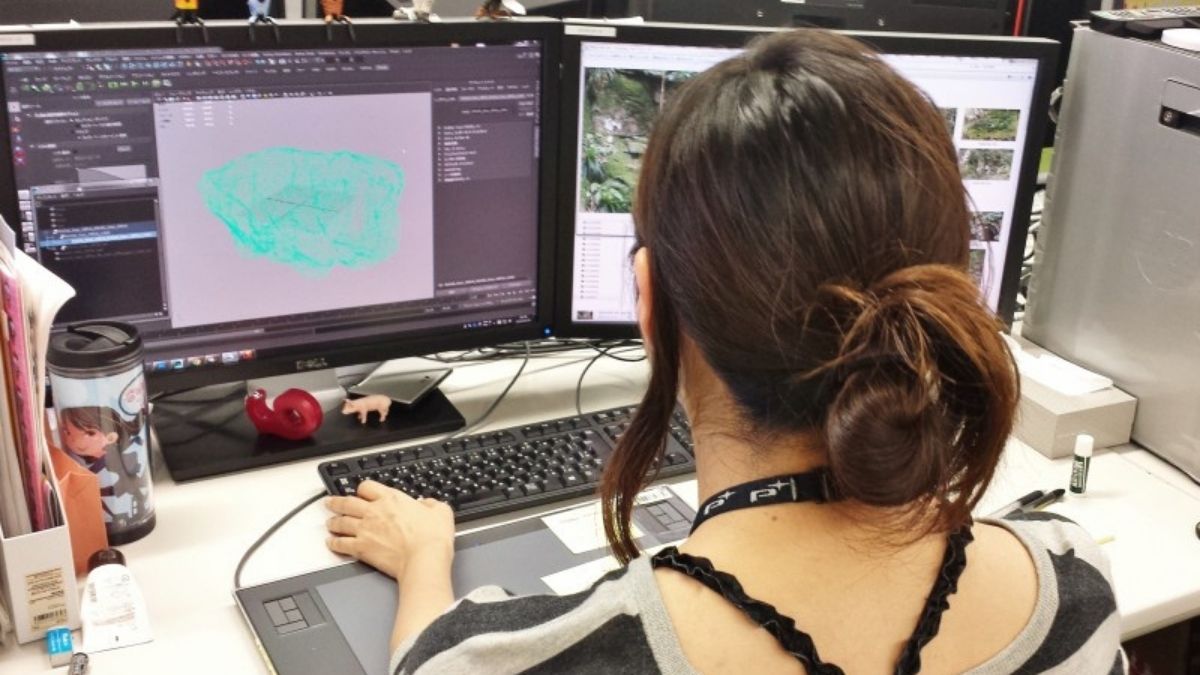If you’ve ever wondered how your favorite game environments come to life or considered pursuing a career in digital art, understanding the role of an environment artist is essential. This comprehensive guide will walk you through everything you need to know about this exciting career path, including daily responsibilities, required skills, salary expectations, and how to break into the industry.
Whether you’re a budding artist exploring career options or looking to transition into the gaming and entertainment industry, this guide will provide the insights you need to make an informed decision about becoming an environment artist.
What Is an Environment Artist?
An environment artist is a digital artist who specializes in creating the settings, backgrounds, and atmospheric elements that bring virtual worlds to life. These professionals work primarily in the video game industry, but also contribute to films, television shows, virtual reality experiences, and architectural visualizations.
Environment artists combine artistic vision with technical skills to design everything from natural landscapes and urban environments to interior spaces and fantastical realms. They work with various software tools to model, texture, and light 3D environments that serve as the backdrop for interactive experiences.
The role sits at the intersection of traditional art fundamentals and cutting-edge technology, requiring both creative flair and technical proficiency.
Core Responsibilities of an Environment Artist
3D Modeling and Asset Creation
Environment artists spend significant time creating 3D models of buildings, terrain, vegetation, and props that populate game worlds. This involves using software like Maya, 3ds Max, or Blender to build geometry that’s both visually appealing and optimized for real-time rendering.
They must consider polygon counts, level of detail systems, and performance constraints while maintaining high visual quality. Each asset needs to fit seamlessly within the overall aesthetic vision of the project.
Texturing and Material Creation
Bringing 3D models to life requires expertly crafted textures and materials. Environment artists use tools like Substance Painter, Photoshop, and specialized material editors to create realistic surfaces, weathering effects, and atmospheric details.
This process involves understanding how light interacts with different materials and creating texture maps that convey the right mood and atmosphere for each environment.
Level Design and World Building
Beyond individual assets, environment artists often participate in broader level design decisions. They help determine the layout of spaces, the flow between different areas, and how environments support gameplay mechanics.
This collaborative aspect requires strong communication skills and an understanding of how players will navigate and interact with the spaces being created.
Lighting and Atmosphere
Setting the right mood through lighting is crucial for immersive environments. Environment artists work with lighting systems to create dynamic, atmospheric scenes that enhance the emotional impact of the experience.
They must understand color theory, composition, and how lighting affects both gameplay and visual storytelling.
Essential Skills for Environment Artists
Technical Proficiencies
Mastery of 3D modeling software like Maya, 3ds Max, or Blender is fundamental. Environment artists also need experience with texturing tools such as Substance Suite, knowledge of game engines like Unity or Unreal Engine, and familiarity with version control systems.
Understanding the technical constraints of different platforms helps create assets that perform well across various devices and hardware configurations.
Artistic Fundamentals
Strong foundation in traditional art principles including composition, color theory, perspective, and anatomy remains crucial despite the digital nature of the work. These fundamentals inform every creative decision and separate professional-quality work from amateur attempts.
Many successful environment artists maintain regular sketching practices and study real-world architecture, nature, and design.
Problem-Solving Abilities
Environment artists frequently encounter technical challenges that require creative solutions. Whether optimizing performance, working within memory constraints, or finding ways to achieve specific visual effects, problem-solving skills are essential.
The ability to iterate quickly and adapt to changing project requirements is equally important in fast-paced production environments.
Collaboration and Communication
Modern game development is highly collaborative, requiring environment artists to work closely with concept artists, level designers, programmers, and art directors. Clear communication about creative vision, technical limitations, and project timelines is crucial for success.
Career Path and Salary Expectations
Entry-Level Positions
New environment artists typically start as junior artists or environment art interns, with salaries ranging from $45,000 to $65,000 annually. These positions focus on creating individual assets under senior supervision and learning production pipelines.
Building a strong portfolio and gaining experience with industry-standard tools are priorities at this career stage.
Mid-Level Opportunities
With 3-5 years of experience, environment artists can advance to senior positions with salaries between $70,000 and $95,000. Senior artists take on more complex environments, mentor junior team members, and may specialize in specific areas like organic modeling or architectural design.
Leadership Roles
Experienced professionals can progress to lead environment artist or art director positions, earning $100,000 to $150,000 or more. These roles involve managing teams, establishing artistic vision, and coordinating with other departments.
Some environment artists also transition to freelance work, offering specialized services to multiple studios or working on independent projects.
Getting Started as an Environment Artist
Education and Training
While formal education isn’t always required, many environment artists benefit from art school programs, game design degrees, or specialized online courses. Programs that combine artistic training with technical skills provide the strongest foundation.
Online platforms like CGMA, The Gnomon Workshop, and various YouTube channels offer targeted training for specific software and techniques.
Building Your Portfolio
A strong portfolio showcasing diverse environments and technical skills is essential for landing your first position. Include personal projects that demonstrate your ability to create complete, polished environments from concept to final render.
Focus on quality over quantity, and ensure your work demonstrates understanding of composition, lighting, and technical optimization.
Networking and Industry Connections
Attending industry events, participating in online communities, and connecting with professionals through platforms like Art Station and LinkedIn can open doors to opportunities. Many positions are filled through referrals and professional networks.
Contributing to indie game projects or participating in game jams can provide valuable experience and networking opportunities.
Your Next Steps in Environment Art
The field of environment art offers exciting opportunities for creative professionals who enjoy combining artistic vision with technical expertise. As virtual and augmented reality technologies continue expanding, demand for skilled environment artists is likely to grow.
Start by exploring the software tools mentioned in this guide and creating your first 3D environments. Focus on learning one tool thoroughly before expanding to others, and don’t forget to study real-world references for inspiration.
Consider joining online communities like Polycount or the Environment Art subreddit to connect with other artists, share your work, and learn from experienced professionals. The journey to becoming a professional environment artist requires dedication and continuous learning, but the reward of seeing your creative visions come to life makes it worthwhile.








